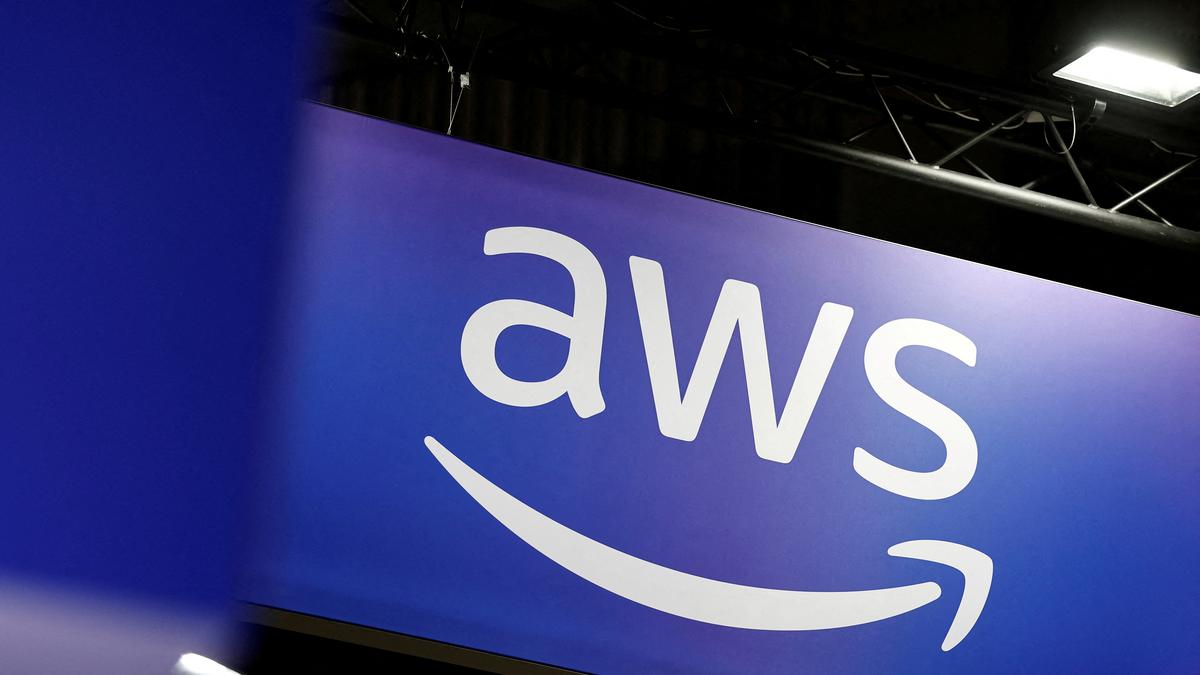Extremely curious about the buzz around ramen, we headed to Tony’s Kitchen at Kacheripady, in Kochi, where we were greeted with a visual treat and a surprise for the tastebuds.
Miso ramen arrives in a white ramen bowl. Under the dark broth hides the noodles, placed on it were four slices of chicken and a couple of shiitake mushrooms; the runny yolk of a half boiled egg cuts a path across it, mixing with the broth. A sheet of seaweed (nori), chopped spring onion and a sprinkling of sesame seeds complete the beautiful picture.
Kochi is wearing its love for ramen on its sleeve as every Asian restaurant and even some cafes have added this soupy noodles dish, which is of Chinese origin but more famously integral to Japanese and Korean cuisine, to their menu. The popularity of Japanese anime and manga alongside K and J-drama has fuelled this appetite for ramen especially post-pandemic.
Abhishek Puthenveettil, cluster manager of Pandhal Café and Deli, says ramen is popular due to its rich flavours which, when combined with a variety of broths, proteins, and toppings makes it a filling, balanced meal of sorts. It is as comforting as it is versatile, and can be customised to suit different palates.
Miso ramen noodles with egg, enoki and pak choi cabbage
| Photo Credit:
Getty Images
An employee of Nasi and Mee adds, “Ramen is flavourful. Some people get addicted to the flavour while others, who are new to Asian cuisine, may not like it as the broth is processed differently from how Indian food is prepared. The broth is slow cooked: the chicken is cooked for almost five hours.”
Little Soi, the pan-Asian restaurant at Panampilly Nagar, is known for their Ichiraku ramen. Yes! It is the same ramen that Naruto Uzumaki slurps in the anime series Naruto.
So, what is Ichiraku ramen?
The ramen is topped with a ‘little soy’; the mild broth is topped with Eomuk fish cake, chilli flakes flavoured with garlic and sesame, which gives it a spicy kick. There are vegetarian and meat (chicken and beef) options for this, priced ₹695, ₹745 and ₹ 745 respectively.
Another popular ramen is miso ramen, which is a miso-gochugaru sauce — a mix of gochugaru and chilli flakes. The broth is slightly sour and spicy; the ramen is topped with Korean fried chicken for the chicken option (₹745) or vegan salmon tofu (₹600) or beef (₹795).
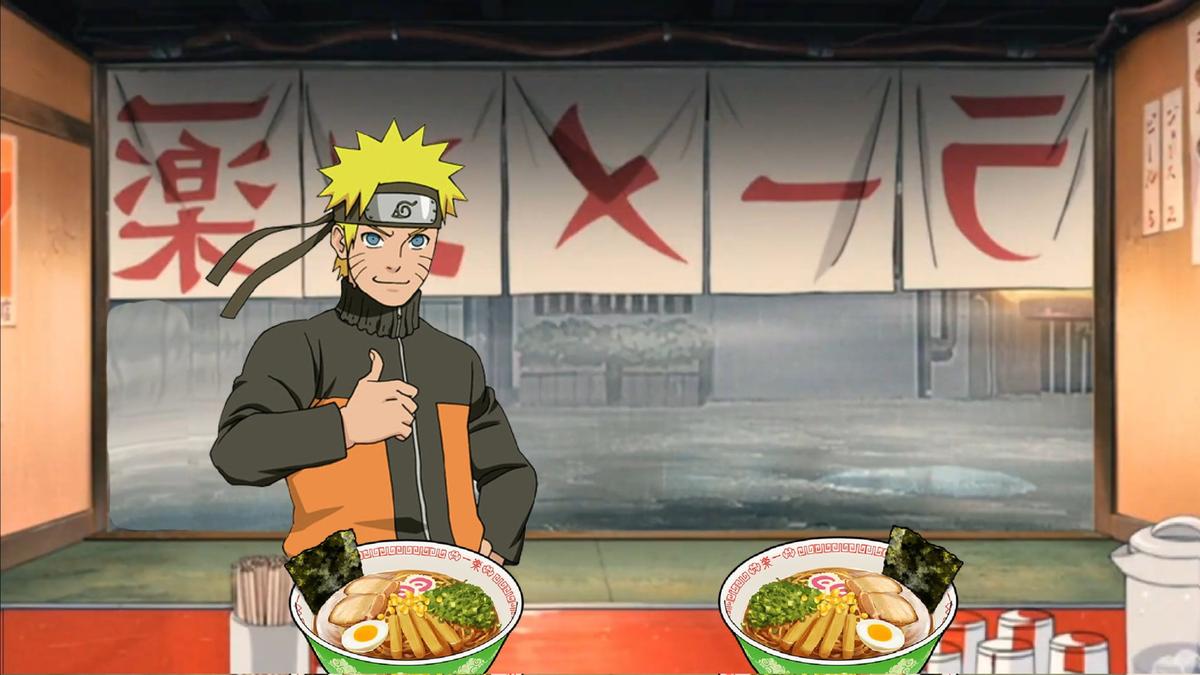
Naruto with his bowl of ramen
| Photo Credit:
SPECIAL ARRANGEMENT
Little Soi sells around 800 bowls of ramen monthly, reveals a restaurant employee. They also have Buldak chicken ramen (₹795) which is a Korean ramen that uses Buldak noodles, now available in supermarkets across the city. It is similar to Maggi noodles, only springier and spicicer, and comes in many flavours.
Nasi and Mee on MG Road is another option for ramen lovers and the ramen-curious. Popular for its spicy Korean ramen, vegetarian (₹495) and non-vegetarian(₹625) versions, it is made with gochujang paste as base. Barbecue shoyu ramen (₹625) topped with grilled, barbecue chicken is another crowd favourite. According to an employee, people like these flavours more. Since miso is not too spicy, the customers prefer flavourful ramen like spicy Korean ramen, which makes up for almost 60% of the order.
If you are looking for the real deal, the closest to an authentic bowl of ramen, then Tony’s Kitchen is the place for you. The most popular item on the menu is the spicy miso ramen (₹850 and ₹950 for chicken and pork). Miso is fermented soya bean, it is rich and toasty, tangy and salty too. Pork lovers’ favourite is tonkotsu ramen (₹950); they also have shoyu ramen with soy (shoyu) sauce as base. Shoyu ramen has a lighter broth unlike miso ramen. The place sells around 150 bowls per week.
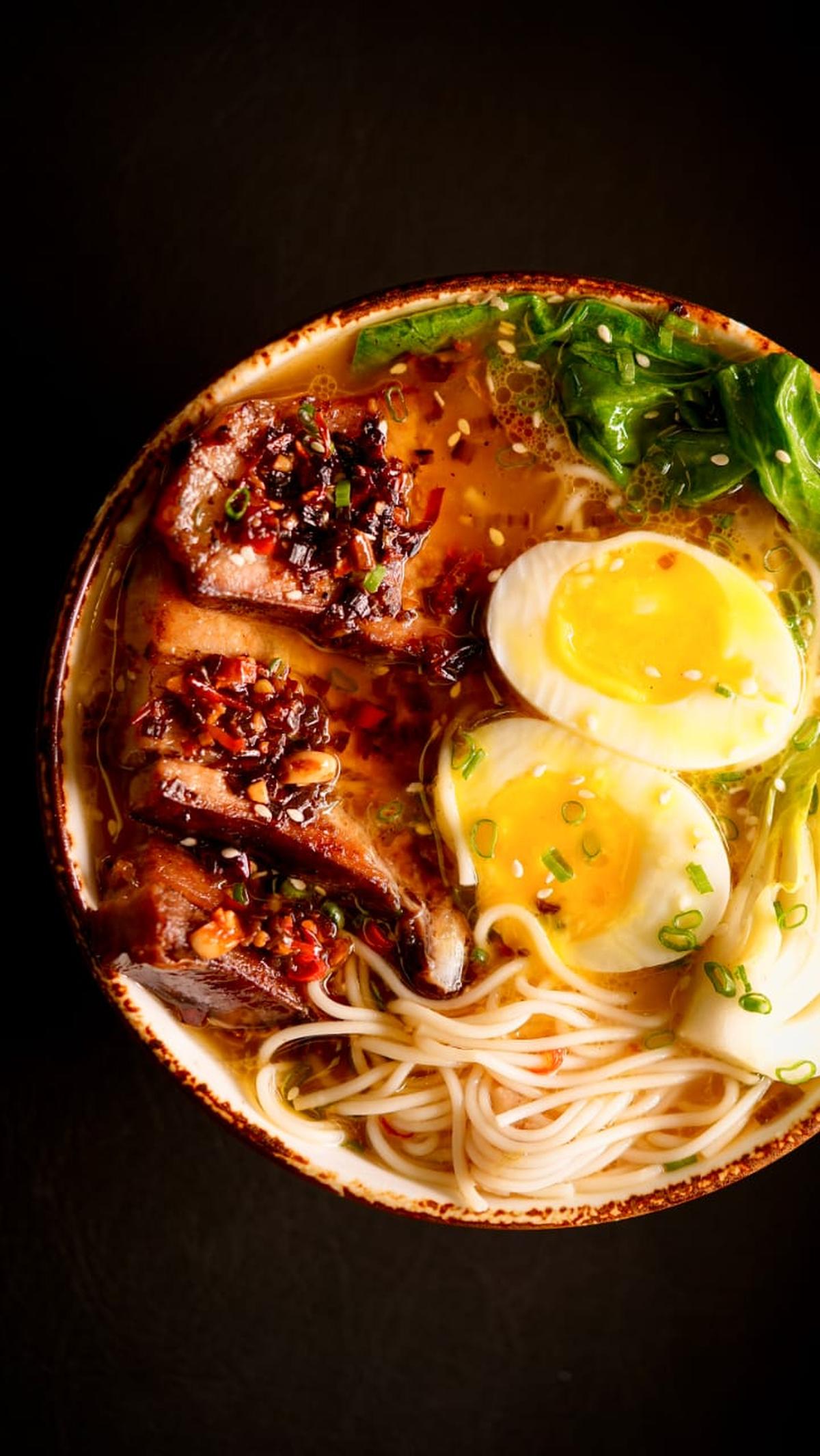
Ramen at Pandhal Cafe and Deli
| Photo Credit:
SPECIAL ARRANGEMENT
An intriguing item in the ramen menu is the soupless ramen, also known as mazesoba in Japanese. The base, at Tony’s Kitchen, is tahini or sesame paste. Then there is the vegetarian ramen, which would work for vegans too, as it has oat milk as base (₹750). All the ingredients that go into the making of ramen, except for seaweed and dried fish, are sourced locally, says Antony Jose, owner-cum-chef of Tony’s Kitchen.
“Ramen feels like something people can relate to in terms of flavour as that is palatable for the Indian customers. It is rich in flavour and there’s a lot of spice involved. So that could be a reason for its popularity. We sell a lot of miso ramen as it is flavourful though the spice can vary depending on the spice tolerance of the person. Some other ramen varieties are subtle in comparison. A lot of restaurants now have ramen, mostly because people find it comforting and tasty,” says Antony, a Le Cordon Bleu-trained chef who makes ramen from the scratch at Tony’s.
There are two kinds of ramen — Japanese and Korean. The latter is the spicier of the two, while the former has has a rich, savoury flavour, usually umami.
Antony says people opt for Korean because it is more flavoursome because of the use of fermented items which add depth to the taste, as in the case of pickle.
Reema Binu, a final year student at Rajagiri College of Management and Applied Sciences (RCMAS), who has tried both Japanese and Korean ramen, says she prefers the Korean version because of her love for spicy food. “I am partial towards ramen because it is healthier than other instant noodles. It is a good, balanced meal, even the broth has a welcoming burst of flavour,” she says. Ramen noodles, when freshly prepared, is soft, and the ramen goes great with kimchi, she adds.
At Pandhal Café & Deli, Edappally, of the four ramens on their menu, white miso tonkotsu ramen (₹645) is popular. Its rich creamy broth made from miso and tonkostu (broth made of pork bone) is perfectly balanced with a hint of umami. Served with tender slices of pork, it is topped with the typical, traditional ingredients of soft-boiled eggs and green onions. Another popular variety is the kimchi dak ramen made of chicken (₹545).
Kochi’s favourite momo place, Shifu’s Momos in Panampilly Nagar, which recently added ramen to its menu, perhaps has the most-pocket friendly bowl of ramen in the city. Both Japanese (₹150) and Korean (₹180 for chicken) versions are available here. “Korean ramen is a recent introduction while Japanese version has been there from last year. It is our popular ramen,” says Kashyap Saigal, owner of Shifu’s Momos.
Japanese or Korean, looks like ramen is here to stay.
Published – January 31, 2025 11:38 am IST


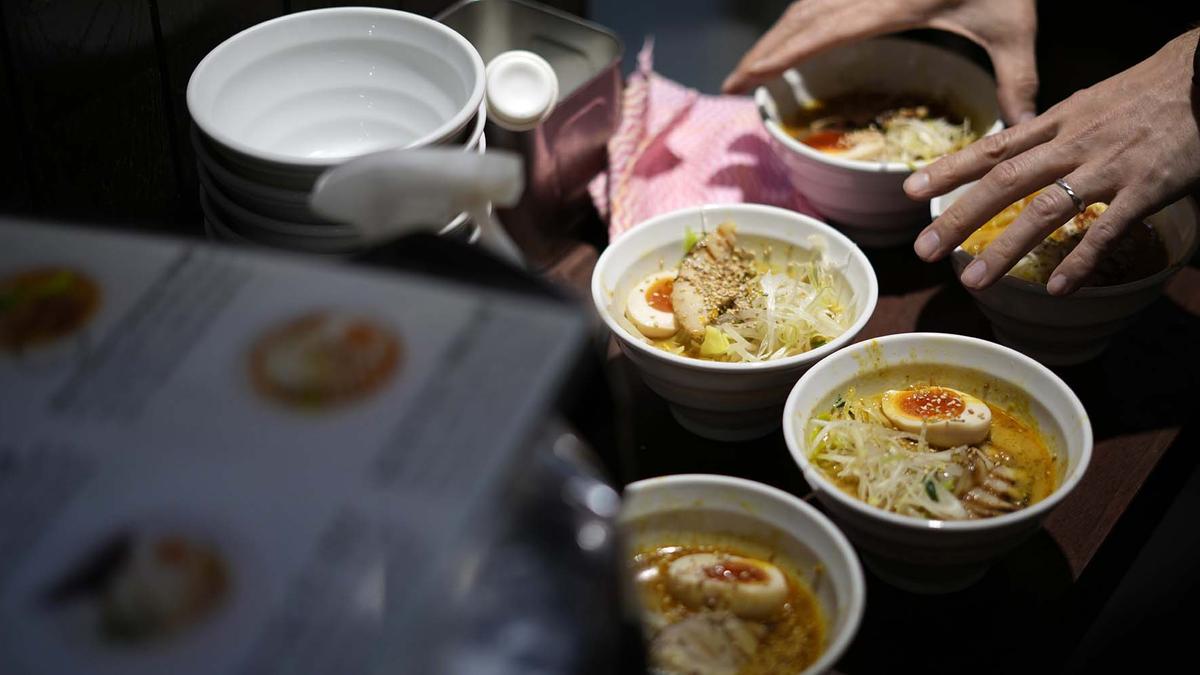
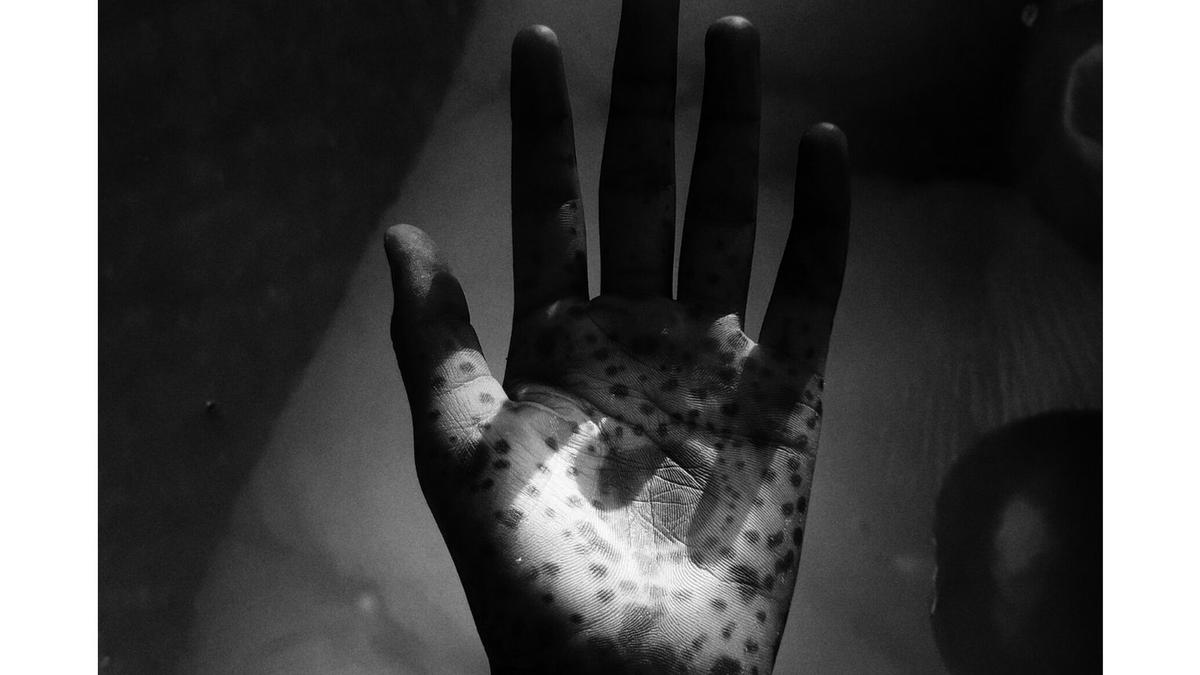
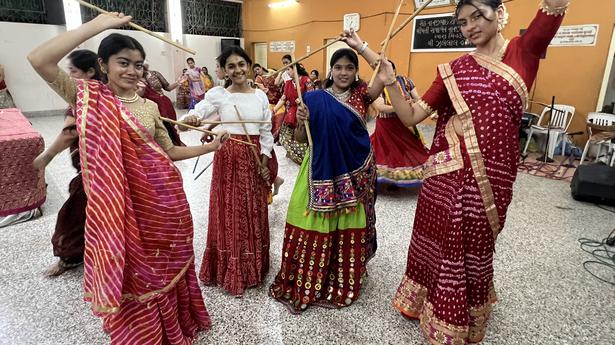
.jpg)
